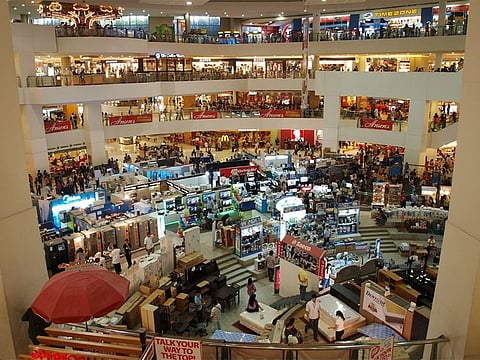Short-term rentals could help UAE retailers
It will help revive sector by attracting new entrants, providing innovative offerings

These days, whether you walk around parts of Dubai, London or New York, it feels like occupying two distinct worlds at the same time. On one level, you know that you are at the epicentre of business and finance, but on the other, you are confronted with store closures.
These contradictory signals are almost an actualisation of a Yogi Berra joke: Nobody shops there anymore, it’s too desirable. The ongoing retail apocalypse signals somewhat of a paradox and when we look at the data, we begin to glimpse at the underlying dynamics at play.
In all these cities and more, retail rents have outstripped economic growth (and retail sales) since 2008 by a factor of three or more. In New York for example, rents have risen by a staggering 89 per cent since 2008, even as retail sales increased by 32 per cent over the same period. Similar data points have been seen in London and Dubai.
With rents rising so sharply, it is no coincidence that there have been store closures. Added to this has been the impact of online commerce, which has compressed retail margins further.
This has meant that goods have moved from stores to warehouses, thus adding to the vacancies in prime retail spaces. The third and most critical variable has been that the fastest growing online firms — which are new start-ups and therefore not sure of the sustainability of their business models — are more willing to experiment with short-term leases.
However, landlords are unwilling to offer such lease terms, instead preferring to wait for richer, long term tenants, especially the international chains. The confluence of these three dynamics meant that in the large swathes of retail real estate that have opened up, we have seen some occupancy from the types of tenants whose offerings cannot be offered online.
It is interesting to note that whether in Oxford Street, Fifth Avenue or Downtown Dubai, the retail tenant mix has moved towards hair salons, nail salons and restaurants. The one thing that they have in common is that these services cannot be found on Amazon or Noon.
In the digitised economy, the traditional tradable goods have moved online, which earlier were available in department stores.
What we are currently left with is a stubborn kind of market imbalance. Landlords are holding out for longer term tenants, which implies an inevitable oversupply of non-online based services, whereas the online firms that are willing to occupy these retail spots are asking for shorter term leases.
In such an environment, malls start to look increasingly the same with similar store offerings, with the consequence that experimentation is being stripped away from the economic enterprise of the local economy. Eccentric store offerings have become increasingly rare; rarer still with economic sluggishness that is currently prevalent in some of these cities.
In Dubai, there has been speculation that the regulatory authorities are considering a three-year rental freeze for retail tenants as part of their efforts to rein in rental costs. However, progress and equilibrium will be reached when landlords start to move towards short-term rental contracts in the retail space (especially in the community mall space), allowing for a new breed of tenants to take over.
Economic laws dictate that equilibrium has to eventually take place. By that logic, the current retail vacancy rates are a necessary torment — the grassland fires that will eventually make way for a new ecosystem. For this ecosystem to thrive, however, landlords have to adjust their expectations structurally, as they have done in the residential and commercial space.
To be sure, many retail landlords have experimented with lease contracts by switching to an admix of a base fixed rate with a percentage of sales embedded into their contracts. Whilst this is helpful, it does not go far enough.
The core issue remains the duration of the lease, and in order for there to be a sustained diversity, retail landlords will have to move towards flexibility in the duration of such leases. The sooner that transpires, the more diverse will be the retail ecosystem, allowing for economic risk taking at the SME level to thrive and for the “souq” feel in Dubai to be restored.
Healthy retail ecosystems in turn nurture demand for residential and commercial spaces, thereby creating a positive feedback loop throughout the economy. It is this variable that ultimately distinguishes the cultural fabric of great cities.
Sameer Lakhani is managing director at Global Capital Partners.
Sign up for the Daily Briefing
Get the latest news and updates straight to your inbox



